WebRTC: What Is It and What Does It Do?


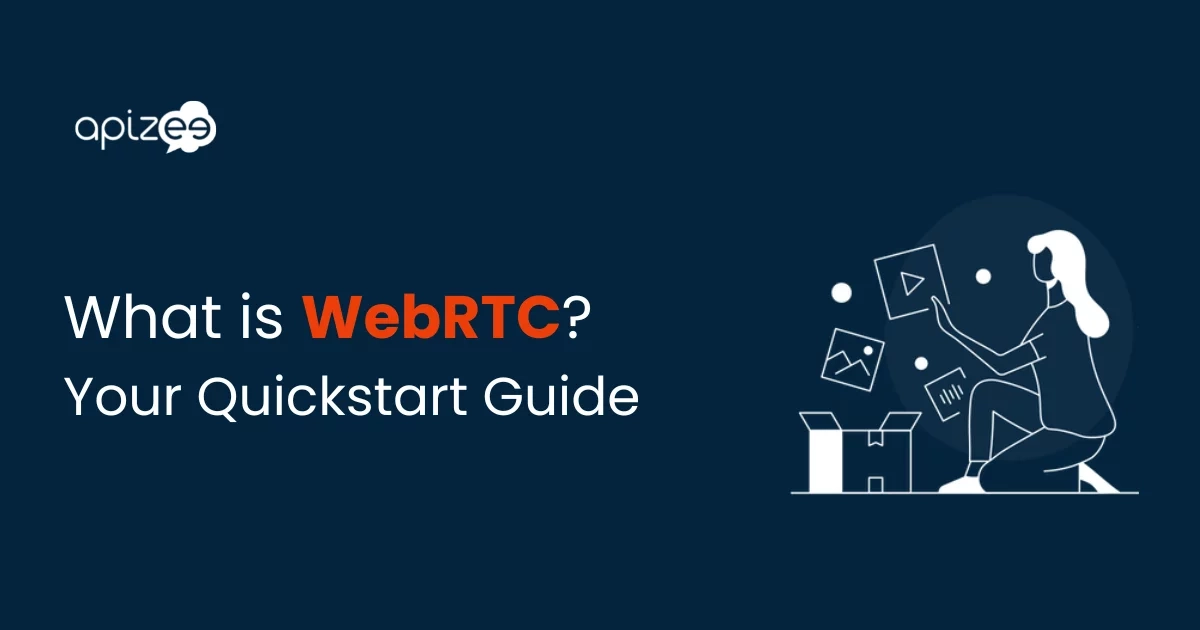
WebRTC is paving the way for seamless device-to-device communication.
WebRTC (or Web Real-Time Communication) enables online collaboration, provides opportunities for video communication, and more—without any need to install software across your devices.
Throughout this article, we’ll dive deeper into what WebRTC is, how it works, and how Apizee uses it to help our clients communicate better.
WebRTC is an open-source project that enables real-time communication and data transfer across browsers and devices. It makes real-time voice, text, and—importantly—video communication possible.
One of the key components of WebRTC is that it allows browsers and clients to communicate directly without having to send information to an intermediary server. It effectively cuts out the middle step so that data is kept between the users.
This is different from a bidirectional communication protocol like WebSockets, where real-time communication goes through the server before it reaches the end client.
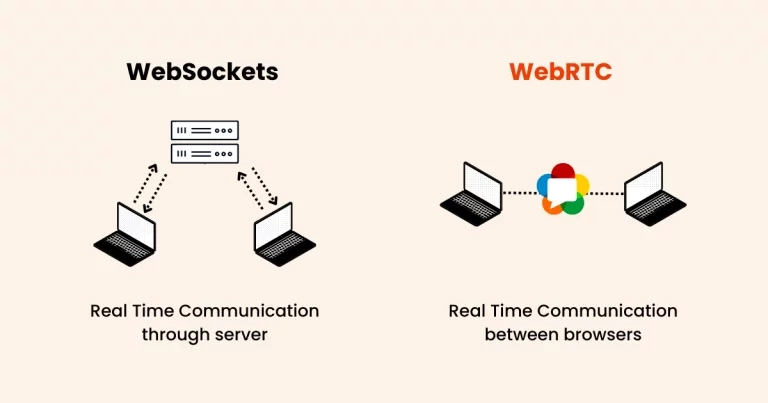
The World Wide Web Consortium (W3C) developed browser-based WebRTC to allow secure, direct communication between browsers and devices. Most popular browsers (e.g., Google Chrome, Apple Safari, Mozilla Firefox, and Microsoft Edge) support this technology.
WebRTC is a game-changer for team leaders and enterprise companies. It makes internal video communication between members of your team and external communication with your customers that much easier.
Not too long ago, if your support team needed to hop on a video call with a customer to diagnose an issue, both parties would need to have the same video communication tool downloaded and installed on their computers. Then, they’d have to join a call using the same meeting code.
This process was often clunky and frustrating, making it an impractical customer service tool.
WebRTC is the perfect antidote to cumbersome technology. Using enabled platforms like Apizee, your team can host live video conferencing directly through a website.
You can send a link, and your recipient will be connected to a video call. No middle server. No software download required.
WebRTC uses JavaScript, HTML5, and other application programming interfaces (APIs), to embed voice and video communication into web browsers.
These APIs are how direct peer-to-peer communication is possible, enabling the seamless transfer of audio, video, and data from one device directly to another.
WebRTC uses several interrelated JavaScript APIs to help bring this technology to life. If you’re using a platform like Apizee, you won’t need to consider these components too deeply.
If you’re interested in learning more about the tech behind the platform, here are three components WebRTC uses:
The MediaStream API was designed to get access to a device or browser’s audio and video capabilities. It uses the getUserMedia and getDisplayMedia methods to request permission to access the camera, mic, and/or screen during a video chat.
MediaRecorder is another component of the MediaStream API that enables one or both parties to record audio and video from their devices.
RTCPeerConnection does the heavy lifting in connecting the two browsers together. It’s the main entry point for the peer-to-peer connection, allowing the two devices to stream audio and video to each other.
RTCPeerConnection is also responsible for maintaining the connection, monitoring it throughout, and then closing it once the communication is complete.
RTCDataChannel was built using SCTP (Stream Control Transmission Protocol) and works together with RTCPeerConnection as a way to transfer data between the two browsers. This component enables bidirectional data transfer between two peers.
STUN (Session Traversal Utilities for NAT) /TURN (Traversal Using Relays around NAT) and signaling servers are pieces of software that take care of all the nitty-gritty details of establishing a connection across all the participants in a conversation.
This includes:
While WebRTC doesn’t need a server to communicate between devices, sometimes WebRTC-enabled platforms do use them (for example, to get around firewalls, or optimize bandwidth use).
However, using an intermediary server can cause low latency, delaying video streaming and data transfer.
WebRTC allows businesses to improve collaboration, streamline sales meetings, and offer faster and easier customer service. That all falls down when the platform lags. There’s nothing more frustrating than an interrupted, broken video call when you’re trying to solve a time-sensitive problem.
Furthermore, there’s a data security issue when introducing additional parties (such as a server). The data passed between users now much flow through an intermediary that is susceptible to attack. This is why industries with compliance regulations, such as healthcare or legal services, find it difficult to use traditional communication software.
So, if you’re considering using WebRTC, before you press go on a platform, ensure that:
WebRTC has opened a lot of doors in the communication world. Apart from the obvious user experience benefits we’ve already mentioned (faster service, no downloads, etc.), there are several benefits to using this type of technology within your business.
The W3C developed WebRTC as a completely free, open-source project available for both personal and commercial use. This means companies can use it to offer things like in-browser video communication as a service without having to pay to play.
Developers can create easy in-house communication methods with this open-source project. Plus, as developers use and improve it, existing tools that rely on WebRTC will also improve. Developers can head to WebRTC.org to access the codelab and work with it for their own projects.
WebRTC automatically encrypts any type of data that is being transferred using its APIs. If anyone were to try to hack into a video call or data transfer that’s using WebRTC, they wouldn’t be able to decipher anything from the communication. Executives feel secure using WebRTC for corporate communications, knowing their team can have conversations without fear of leaks. This encryption is also key for healthcare providers that need to adhere to HIPAA compliance laws.
WebRTC technology provides flexibility for development teams to use in their app or software in whatever ways that best fit their needs.
Why do we love this? It means that there won’t be millions of duplicate tools out there.
WebRTC enables the existence of new types of software, helping to modernize online communication and catalyze future enhancements.
WebRTC isn’t exclusive. Every major browser and operating system offer WebRTC compatibility.
It’s also compatible with mobile applications and mobile operating systems, like Android and iOS, enabling even more people to have access to WebRTC applications. This helps you reach way more users than you otherwise could with downloadable communication tools.
There’s no need to download or install any external apps, and it’s extremely easy to use. The entire conversation can be done right inside your browser.
What is WebRTC used for? There are several use cases for WebRTC and how your team can take advantage of this technology, too.
The most common use case for WebRTC is for team communication: text, voice, or video. Instead of teams having to download external software like Skype or Zoom, WebRTC allows teams to communicate via an in-browser meeting room.
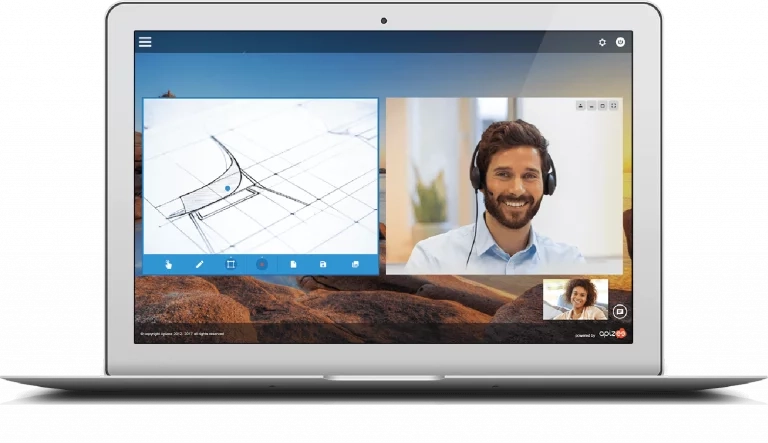
This is exactly how Apizee works, providing one-click access to online meeting spaces without the need for downloadable software. It makes joining a meeting or a quick huddle a much more seamless process.
Your team can create a standing meeting link and type it into their browser each time they need to meet. This takes only a few seconds (depending on the internet connection, of course), rather than a few minutes to boot up an entirely separate app.
It’s also a great way to provide internal support.
For example, a web developer might need to hop on a call with someone from the marketing team to help finalize changes on a landing page for an upcoming campaign. To do so, the developer can simply share a meeting link for a huddle before promptly getting back to work, with little to no interruption to their day.
WebRTC tools can also be used to offer customer service assistance and field service assistance. Simply offer video assistance as one of your customer service options. As soon as a customer selects that they want help via video call, an agent can easily send out an invitation link.
The customer then clicks the link, opening the video call in their browser or mobile app. Your support team can easily assist them face-to-face to resolve their issue. Plus, WebRTC enables the use of screen sharing. With this feature, customers can show your support team exactly what they’re seeing, making it even easier to assist them.
Let’s say your customer keeps getting an error when using your software. It could be a bug or it could be user error, but without actually seeing the issue yourself, it can be hard to identify the root cause.
This is where Apizee and WebRTC video communication comes in. Through seamless online video chat links, your business can improve first call resolution, reduce technical diagnostic visits, and improve the overall support experience. It even enables your team to provide a more personal touch for your customers.
WebRTC can also be used as the basis for live-streaming apps. Some apps that already use WebRTC include Facebook Live, and even Peloton for their live classes. These apps can be used to view live classes, host live shopping sessions, stream video games, and more.
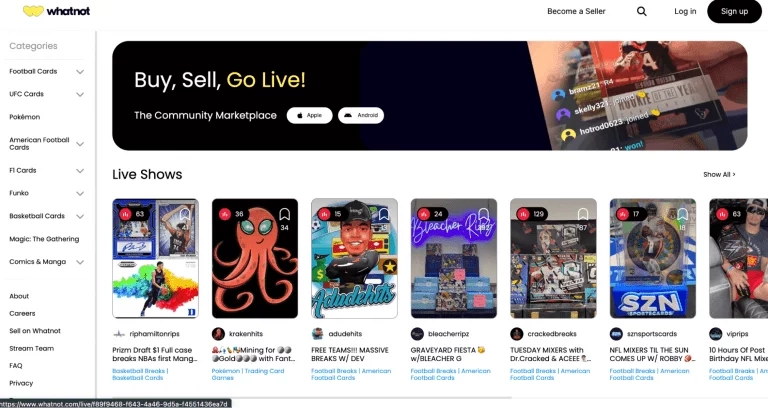
Some live-streaming apps are simply used to blast live video to a large audience of people at once, without much of an interactive experience (like Peloton’s live exercise classes). Others, like Facebook Live, allow viewers to leave comments and reactions throughout the live stream.
There are many different use cases for live streaming, including:
Healthcare providers and therapists often take advantage of WebRTC-enabled software so they can offer telehealth appointments. Essentially, these are virtual doctor and therapy appointments that make it easy for those who are less mobile to still visit their doctor or therapist.

Telehealth video communication was also a major life-saver during the initial COVID-19 lockdowns, allowing patients to still see their medical professionals while staying safely at home. Apizee offers telehealth and telemedicine video assistance that is fully secure and compliant.
The Metaverse is a newer concept in technology, referring to an online virtual space where internet users can interact with each other via virtual and augmented reality.
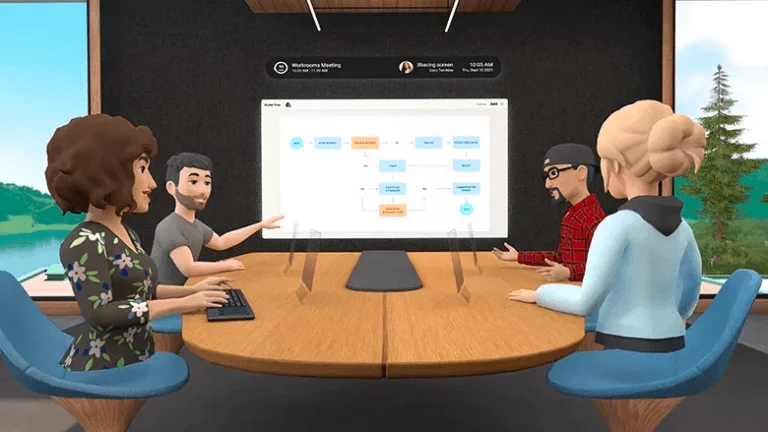
While the Metaverse doesn’t yet exist in the way that developers hope it will in the future (you might eventually be holding virtual reality meetings), WebRTC is likely going to have a major hand in its virtual communication capabilities.
This could provide an even more immersive and interactive method of communicating with your teammates and your customers, doing so via Metaverse avatars rather than face-to-face video communication.
The Internet of Things (IoT) refers to the network of physical objects that are internet-capable.
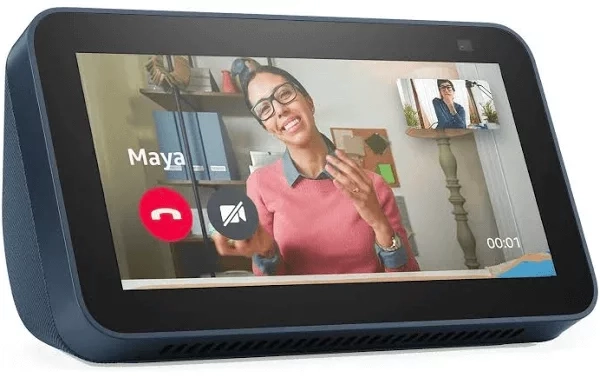
Your Google Home or Amazon Alexa are some of the more obvious objects, but also things like baby monitors, Ring doorbells, TVs, and other smart devices. These all belong to the Internet of Things category.
When objects enable users to see or hear things near them (e.g., the aforementioned baby monitors and video doorbells), they’re often using WebRTC to make that communication or video feed happen.
WebRTC’s initial release was in 2011, and Apizee has been working with the technology for nearly as long. We’ve spent the last 10 years perfecting our tool and its WebRTC foundation, as well as offering other people the ability to use WebRTC in their own projects.
Our team has a number of WebRTC experts who stay up-to-date on all of the technology’s updates, as well as browser updates that could potentially change how it’s used.
“For over ten years now, we have been working on WebRTC development, with a strong emphasis on application interoperability. We have provided tools that greatly facilitate developer integration, taking into account the specifics of each browser, such as the constraints of autoplay policies on Safari/iOS. Our goal is always to offer a smooth and consistent user experience, regardless of the browser used.” said Frédéric Luart, Founder of Apizee.
Due to this expertise, we consistently receive feedback from our clients like this:
“Apizee’s APIs fully met our objectives: simple and quick integration into our business application in less than a month, and fluidity of use for our doctors and patients” said Émilien Gauthier, CTO at Predilife.
We’re also able to offer a number of use cases to our clients through our WebRTC-based tool, from customer relations and support to field services, collaboration, and sales.
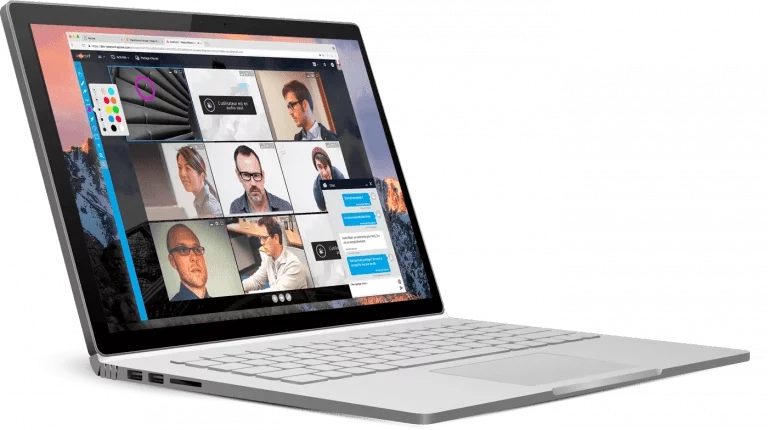
Create virtual rooms that are used for video messaging, screen sharing, and file sharing without asking people to download software.
Apizee’s continued work with WebRTC ensures that our users will always have a seamless experience with all of their voice and video communication.
WebRTC is a helpful technology that supports in-browser video and voice communication. It makes remote communication easier in a number of ways—something that’s essential when so many people work remotely or want to communicate in a way that’s convenient for them.
Take advantage of software that utilizes WebRTC and makes communication easier for you, your team, and your clients. Learn more about how Apizee can work for your organization.
Claire Boscq, CX Activator and founder of JCX Alliance, shares her unique approach to wellbeing-led customer experience. Discover her vision in this new Apizee CX Voices interview.
[CX Industry Voices] Interview with Claire Boscq
25 Jun 2025
Call Centre Helper’s Xander Freeman spoke to Charles Kergaravat, CMO at Apizee, about the rise of video chat in customer service.
The rise of Video Chat in customer service
20 Jun 2025
Simon Macklin from Salesforce, explains how AI and human empathy combine to shape the future of CX. Discover insights in the latest Apizee CX Voices interview.
[CX Industry Voices] Interview with Simon Macklin
19 Jun 2025
Interested in our solutions?